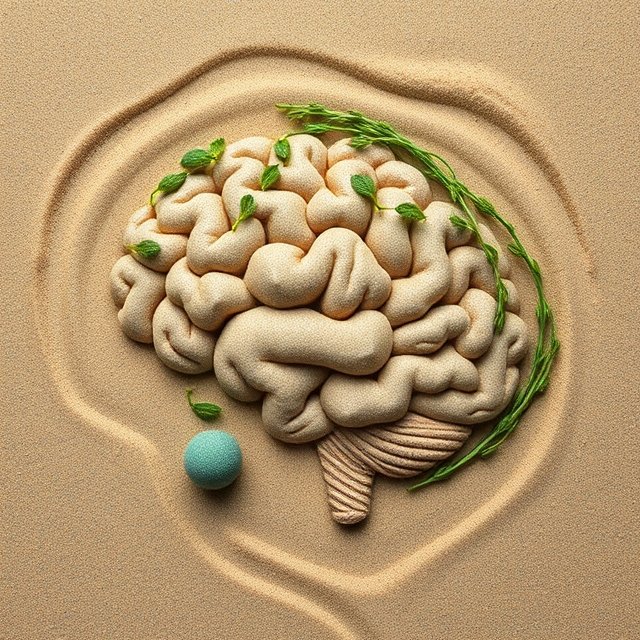How Sandtray Therapy Impacts the Brain: A Deep Dive
What’s Actually Going On in the Brain During Sandtray Therapy?
At first glance, sandtray therapy might look like just a creative or even playful activity. But underneath the surface, it’s doing some serious neurological heavy lifting. This hands-on, symbolic process taps into how the brain stores memory, processes emotion, and heals from trauma—and it does it in a way that doesn’t require you to have the right words (because let’s be honest, sometimes they’re just not there).
Here’s how sandtray therapy engages the brain—and why it’s so effective for both kids and adults working through complex emotional experiences.
1. Right Brain + Limbic System: Accessing Emotion Without Words
Sandtray therapy is primarily visual, spatial, and symbolic—all things the right hemisphere of the brain loves. This is the side tied to big-picture thinking, creativity, and emotional processing. It’s also where a lot of early, nonverbal, or traumatic memories tend to live. By engaging the right hemisphere (alongside the limbic system—the brain’s emotional hub), sandtray therapy offers a way to explore and process emotions safely, without needing to narrate them in a linear, verbal way.
2. Hippocampus and Memory: Making Sense of the Past
The hippocampus helps us organize and store memories in a way that makes sense. But when someone experiences trauma, the hippocampus can get overwhelmed—so memories end up fragmented, disorganized, or completely shut off from language. In the sandtray, clients symbolically recreate scenes from their inner world. This externalization helps the hippocampus piece things together, turning scattered memories into something more coherent and easier to carry.
3. Neuroplasticity: Rewiring Emotional Patterns
Neuroplasticity is the brain’s ability to change, adapt, and build new connections—and sandtray therapy is a great example of that in action. When someone engages with painful or confusing experiences in the tray (and does it within a safe, supportive relationship), their brain starts forming new associations with those memories. Over time, this can help reduce the emotional charge tied to past experiences and build more flexible, resilient ways of responding.
4. Parasympathetic Nervous System: Calming the Body Through the Hands
The act of physically interacting with the sand—digging, shaping, building—can activate the vagus nerve, which plays a key role in calming the nervous system. This is especially powerful for people who tend to live in survival mode (aka stuck in “fight-or-flight”). By grounding the body through touch and movement, sandtray therapy supports regulation and helps the brain shift into a state where it feels safe enough to do deeper emotional work.
5. Implicit Memory: Symbols That Speak for What Can’t Be Said
Sandtray therapy taps into implicit memory—those body-based, sensory, and emotional memories we don’t always have words for. These can be especially strong in early childhood or in traumatic experiences where language wasn’t available. By allowing clients to express these memories symbolically, the tray creates space for meaning-making and emotional processing in a way that feels contained and manageable.
6. Bilateral Stimulation: Helping the Brain Talk to Itself
Using both hands in the tray creates a kind of natural bilateral stimulation—engaging both hemispheres of the brain at once. This supports integration, helping the emotional/sensory right brain connect more effectively with the logical/verbal left brain. (Think of it like helping the emotional part of the brain finally get heard and understood by the thinking part.) This connection often brings relief, insight, and a felt sense of “Ohhh... that makes sense now.”
7. Building a New Internal Map: Rewriting the Emotional Blueprint
As clients symbolically process their experiences and revisit painful memories in the context of safety, choice, and attunement, the brain starts building a new emotional map. Old associations (like fear, helplessness, or chaos) get replaced with newer ones (like safety, agency, and understanding). This shift not only softens the impact of trauma but also strengthens the brain’s ability to handle future stress in healthier, more adaptive ways.
Why It Matters
Sandtray therapy is more than just making scenes in a box of sand. It’s a full-brain, body-inclusive way of healing—especially when talking isn’t enough or feels too overwhelming. It allows people to access, organize, and process their internal world in a way that feels safe, empowering, and deeply personal.
If you’re curious about how sandtray therapy might support you or your child, we’d love to talk.
Reach out to Willow & Moss Counseling to learn more about how sandtray therapy can help with emotional healing, trauma recovery, and building inner resilience.
Willow & Moss Counseling – Compassionate Therapy in Cherokee & Cobb County, Serving Woodstock, Holly Springs, Canton, Kennesaw, and Marietta.


